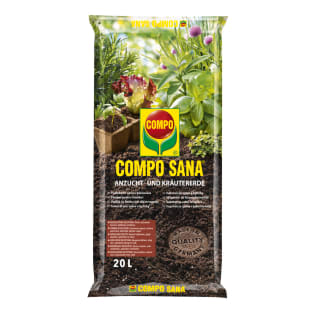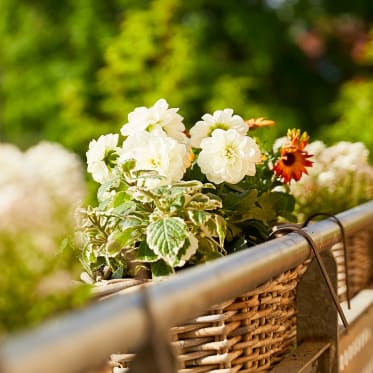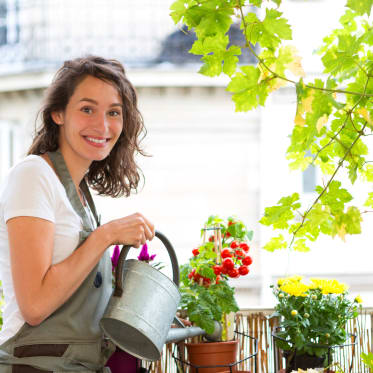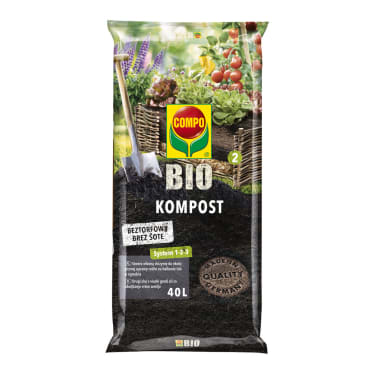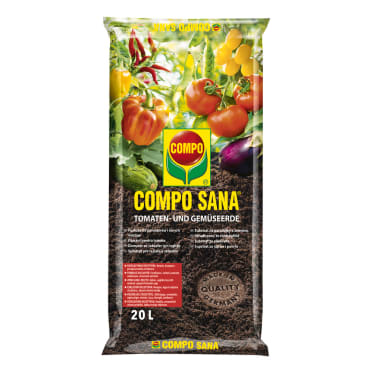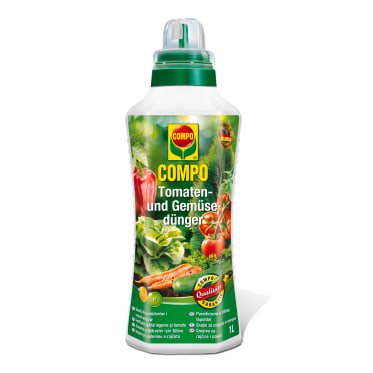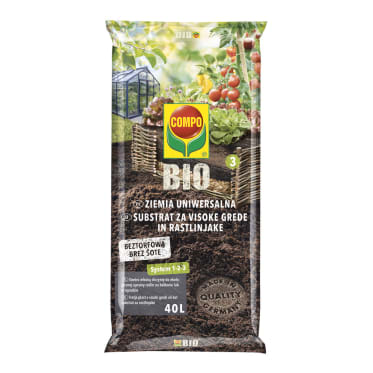Frequent search terms
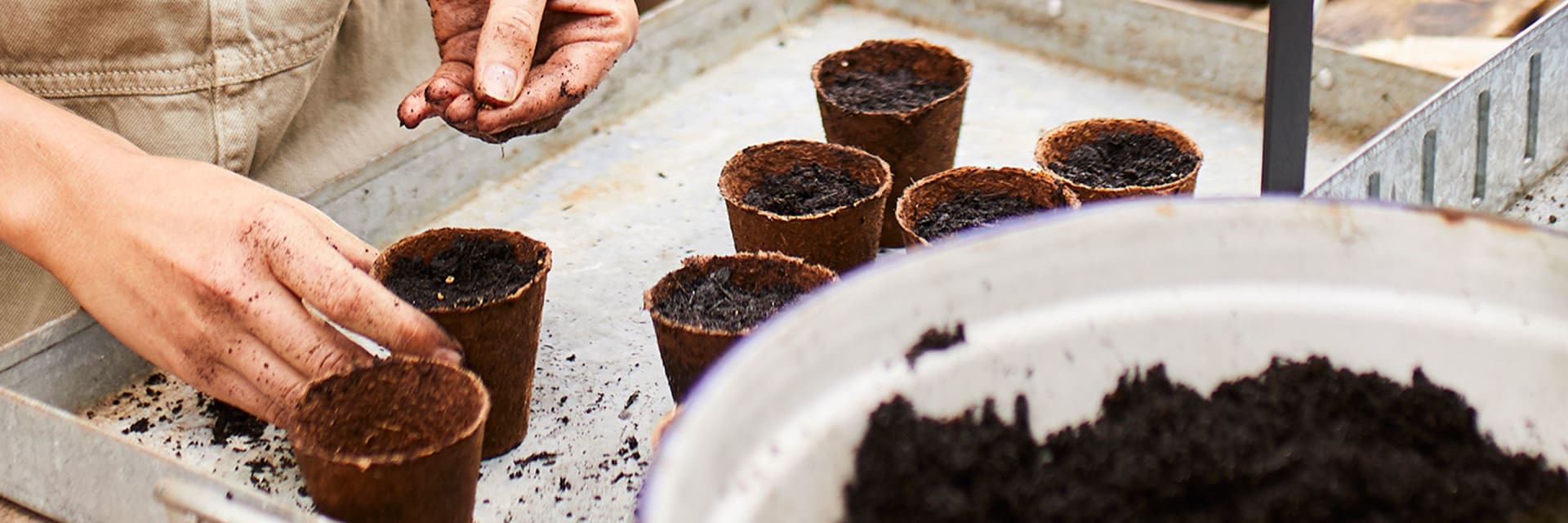
- COMPO
- Guide
- Plant Care
- Herbs, fruits and vegetables
- Pre-germinating vegetables
What to consider when sowing vegetables
Pre-germinating vegetables
Ever dreamt of having your own vegetable garden, a lush raised bed or vegetable harvest from the balcony? For a rich and varied vegetable harvest in the summer, certain plants need to be pre-germinated at the beginning of the year. On the other hand, others can be sown directly into the vegetable patch later on. We show you what to consider when sowing vegetables and give you tips for guaranteed success.
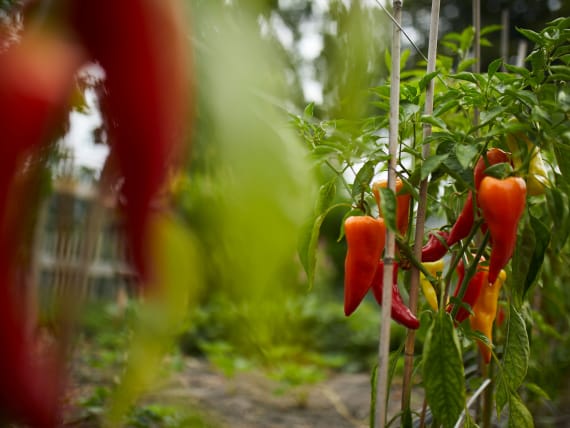
That's why it's worth the effort
Which vegetables should be pre-germinated?
Plants should always be pre-germinated if the climatic conditions outdoors are not suitable at the time of sowing. It's advisable to grow such plants on a windowsill or in a heated greenhouse. Vegetable seeds usually need evenly warm temperatures and moisture to germinate. The time for sowing and growing varies depending on which vegetables you choose. Under certain circumstances, this may also be during the winter. Other varieties, especially native ones, do not need to be pre-germinated but can be sown directly in the vegetable patch. These include root vegetables such as carrots, radishes or beetroot, for example. They grow very quickly and do not need high temperatures for germination. Since the fruits grow underground, they are not as sensitive to temperature differences as tomatoes are, for example. In addition, the growing season for tomatoes, aubergines and cucumbers is so long that sowing them outdoors for just the warmer months is not enough to ensure a good harvest before the cold season sets in. You can find a summary of the different vegetables and right time to sow them in our sowing calendar:
What's the difference between light and dark germinators?
Seeds are basically divided into light and dark germinators. As the name suggests, light germinators need light to germinate, so you shouldn't cover them with soil when you sow them. You simply put them on the ground and press them a little. On the other hand, dark germinators are inserted a little way into the soil. They need the layer of soil to strip off their husk as they make their way toward the light. Most herb seeds are light germinators and most vegetables are dark germinators. A summary can be found here:
| How to grow vegetables | Vegetables by type of germinator |
|---|---|
Light germinators | Carrot, lettuce, celery, tomato |
Dark germinators | Pepper, chilli, cucumber, courgette, aubergine, peas, beans, lamb's lettuce, pumpkin, sweetcorn, radish, beetroot |
How to grow your own produce
Vegetable sowing step by step
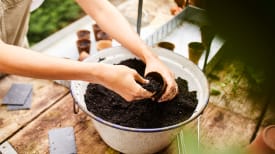
1
Preparing a planter
Fill a seed tray or pot with special seed compost and press down gently. Lightly moisten the soil with a little water.

2
Sowing seeds
Now place the seeds on top of the soil. Light germinators are only placed on top of the soil. On the other hand, dark germinators are gently pressed into the soil. As a rule of thumb, seeds should be put about twice as deep into the soil as their thickness.
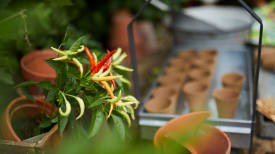
3
Cover the container
Now place a cover on top of the planter and put it somewhere warm and bright. Air the container daily and moisten the soil as soon as it starts to dry. It's advisable to use a spray bottle for this to prevent the seeds from being washed away.

4
Remove the cover
The cover can be removed as soon as the seeds have germinated and the first cotyledons are visible. The seedlings must now be kept moist and sufficient light is also extremely important.
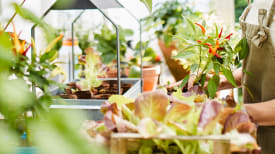
5
Prick seedlings (optional for seed tray)
As soon as the plantlets are a little larger and more stable, they can be pricked out. When pricking out, the strongest plantlets are taken out of the seed tray and placed in a separate pot. This provides them with more space to grow and fully exposes them to the light available. The soil in the new pot should also be kept moist.
Distributing fine seeds more effectively
Sowing fine seeds evenly is often a challenge. Accordingly, it's advisable to mix them with dry quartz powder and then to spread this mixture.
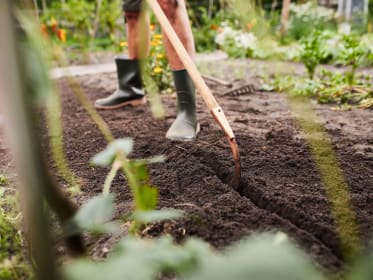
How to sow in a vegetable patch
It's extremely important to maintain planting distances when sowing directly into a vegetable patch because you won't be repotting the plants again. As the distances depend on the plant's size and root growth, you will usually find this information on the back of your seed bag. To better maintain distances, create furrows of about 1-2 cm deep at the distance specified and then sow the seeds in those.
Creating the right growing conditions
Not too early
Timing

When you pre-germinate vegetables on a windowsill, the right timing is crucial. Although there are standard values for each variety of vegetable, you should always check the manufacturer's instructions because a certain amount of deviation may exist. This will ensure that the time of sowing coincides with the growing season of the plant in question. The plants can go outdoors after the Ice Saints period in May. Your plants will have grown too big for the windowsill by then if you sow them too early and there will definitely be a shortage of space in the greenhouse, too. Accordingly, it's advisable not to start growing them too early.
Light and heat
Position
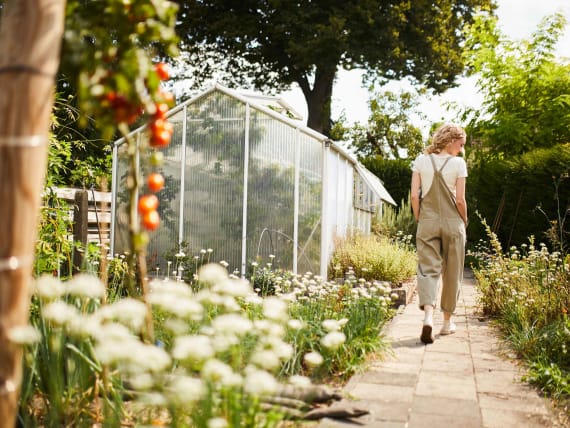
It's important to find the right balance of light and heat so that the seeds can germinate and the seedlings grow well. A heated greenhouse offers enough light and you can control the heat accordingly. Seedlings would get enough light indoors on a windowsill facing south or south-east. If the seedling's position is too dark, the shoots will etiolate. This means that the seedling will grow extremely long and thin shoots to reach the light. Thin shoots are not a good foundation for a strong plant, so they should be avoided. An additional grow light can help to improve light if you start growing very early in the year. Although heat is crucial for seedlings, they should not be placed too close to a heater either in the greenhouse or indoors, as the heated air will dry out the soil very quickly.
Humidity also has an impact on the successful germination of seeds. To keep humidity as high as possible, you can use seed trays with plastic covers. For single pots, upturned preserving jars or cling film make suitable covers. To prevent the spread of fungal diseases, you should remove covers once a day to allow the air to circulate.
Low-nutrient seed compost
Soil and fertilisers

To ensure your vegetable seeds germinate well, you should use a special seed compost. Unlike typical potting soil, it contains few nutrients, which is essential because the seedlings then develop strong roots and are not overfed right at the beginning. It should also be added that since seed compost is sterilised the risk of fungal spores or other pathogens taking hold is reduced. For plants with a high nutrient uptake, like tomatoes, it's a good idea to fill the lower third of the container with special pre-fertilised tomato soil and the upper two-thirds with seed compost. This will result in the immediate development of long roots reaching for the nutritious tomato soil. Seedlings do not require many nutrients. Accordingly, you should only start to fertilise regularly when the second proper leaf pair has formed.
Seed pots and trays
Container

Choosing the right soil is followed by the question as to the right container. The choice of individual seed pot or seed tray depends on the seeds. Individual seed pots are ideal for coarse seeds, such as tomatoes – you can even plant two seeds in one if necessary. Seed trays are more suitable for very fine seeds, as you can remove the strongest plants later on and transfer them to single containers.
Fruit and vegetable growing
More tips for the self-sufficient
The right products for sowing and growing

